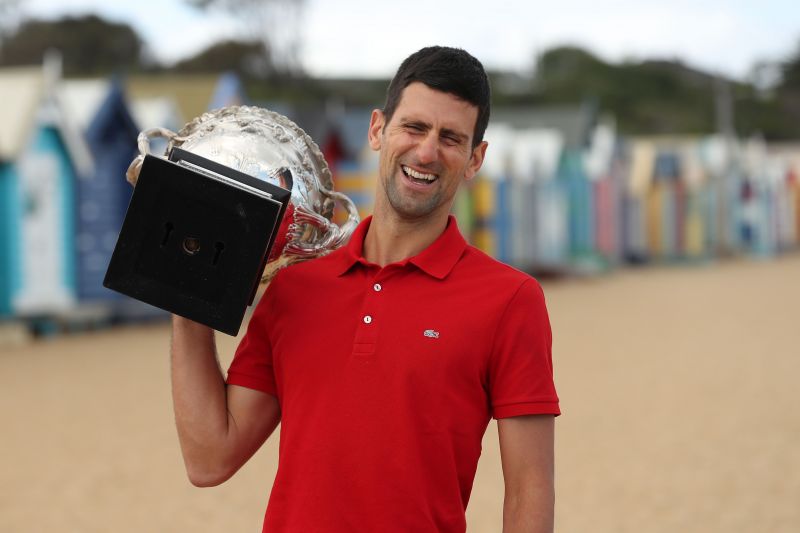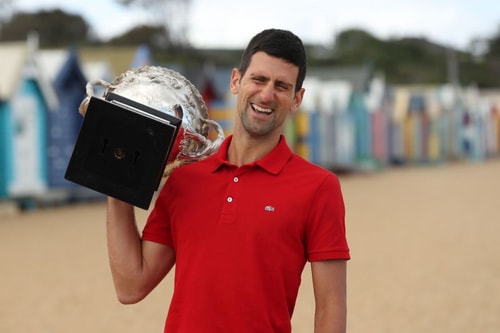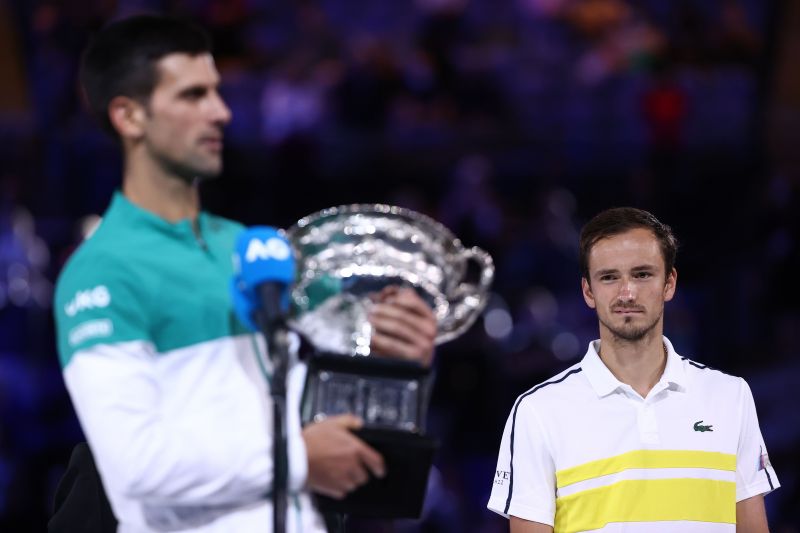
It’s medium to medium-slow court speed everywhere, which has given Djokovic, Nadal & Federer a huge advantage: Greg Rusedski

US Open finalist Greg Rusedski recently spoke to sports website iNews about how the homogenization of surfaces over the last few years has helped Novak Djokovic, Rafael Nadal and Roger Federer maintain their advantage over the younger players.
Rusedski, who himself played in an era which was largely one-dimensional as it was dominated by serve-and-volley, believes the surfaces play too similarly these days. The Brit called for a return to quicker surfaces in order to reduce the predictability in the men's game right now.
"I think the problem is you had three of the all-time greats at the same time," Rusedski said. "And unless they change the court speed [that won’t change]."
The Brit claimed that every tournament playing at roughly the same speed meant that Novak Djokovic, Rafael Nadal and Roger Federer don't need to make too many adjustments to their game. And that in turn helps perpetuate their dominance, as they can get by based on their big-stage experience alone.
"It’s medium, medium-slow [everywhere]," Rusedski added. "And this has given the Big 3 a huge advantage because every tournament they go to, there aren’t big adjustments needed."
The former World No. 4 then referred to Aslan Karatsev's triumph on the quick courts of Dubai last week, suggesting that a change in conditions would lead to more variety among top-rung players.
"Look at Dubai last week, you had Aslan Karatsev who won," Rusedski said. "There were a lot of upsets throughout the draw because you had a quick tour and quick balls. So [we need] more variety."
It is no secret that court conditions have changed since the advent of the new century. In the early 90s, tennis was dominated by serve-and-volley players like Pete Sampras, Stefan Edberg and Pat Rafter. But in a bid to make the game more physical and less robotic, court speeds were brought down at the start of the 2000s.
It was around this time that the likes of Roger Federer, Rafael Nadal and Novak Djokovic surfaced, taking over the mantle from a generation that was not very proficient at playing from the baseline.
But while the 'Big 3' were able to adapt well and develop an incredible ability to play on slower surfaces, the next generation has found it difficult to beat the older players at their game. In fact, the current 'Next Gen' players are more dangerous in faster conditions, as they can generate flat power to take time away from their opponents.
The difference now is that they don't have to beat Roger Federer, Rafael Nadal and Novak Djokovic back-to-back: Greg Rusedski

Greg Rusedski added that while the Next Gen have been stymied by the homogenized conditions, they can take respite in the fact that they might not have to beat Novak Djokovic, Rafael Nadal and Roger Federer in consecutive matches anymore.
"The difference now though [for the Next Gen players] is you’re not having to beat back-to-back-to-back in terms of Roger Federer and Rafael Nadal and Novak Djokovic [to win a Slam]," Rusedski said.
The Brit believes that while no player is likely to scale the heights that Novak Djokovic, Rafael Nadal and Roger Federer have in their careers, tennis might be in fairly safe hands going forward. Rusedski named Andrey Rublev, Stefanos Tsitsipas and Daniil Medvedev as the players who could take the reins from the Big 3 in the years to come.
"I think they’re getting closer, but the problem is that Australia has always been Novak Djokovic's tournament," Rusedski said. "He's won it nine times. The French Open: you might as well just write the cheque to Rafael Nadal now. No player is ever going to get that record of 13. But Rublev, Tsitsipas, Medvedev, they are knocking."